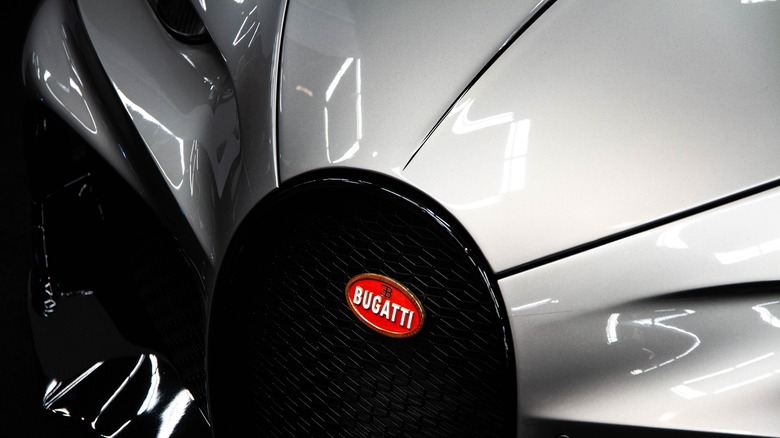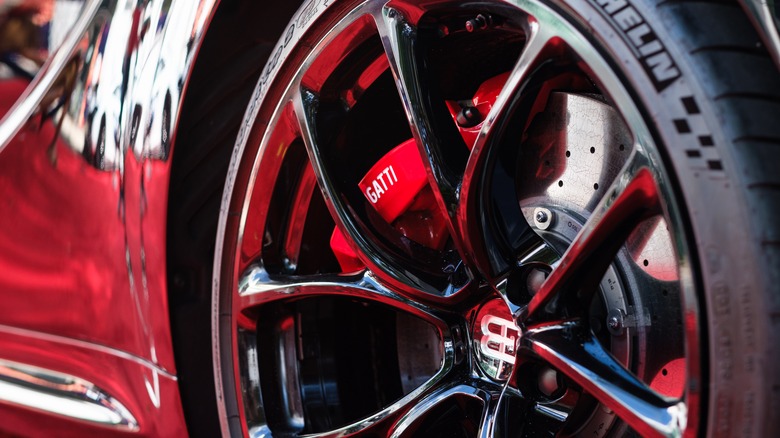What Tires Does Bugatti Use And Why Are They So Expensive?
Bugatti is one of the oldest still-functioning automakers out there, having been founded back in 1909. Over the course of its history, Bugatti has produced a smattering of focused racers and immensely luxurious road cars, but the automaker really broke the mold in 2005 with the release of the Veyron. As "The Grand Tour" host Jeremy Clarkson dubbed it, this was a real concord moment in the automotive space – a 250-mph road car that was luxuriously equipped, leaps and bounds faster than the McLaren F1, and surprisingly easy to drive.
To put the speed of Bugatti's creation into perspective, Clarkson points out that the Veyron would beat the McLaren F1 to 200 mph, even if the former production speed record holder was given a 120-mph head start. It's this immense acceleration and record-setting top speed that poses real problems for both Bugatti engineers and tire manufacturers, as developing rubber that can reliably withstand these demands is no easy feat. Furthermore, the Veyron is 20 years old now, and later releases from the French automaker have only gotten faster.
In the end, Bugatti found it could rely on another French brand, Michelin, for supplying adequate tires. Rather than reaching for something off of the shelf, Michelin developed its Pilot Sport PAX tires specifically for use on the Veyron. Four tires will set owners back $42,000 — that's simply the cost of buying rubber capable of tolerating speeds north of 250 mph.
Special features of the Michelin Pilot Sport PAX tires
Developing a tire capable of performing safely at such speeds requires a different approach to churning out so-called normal performance tires, and it's these tweaks and adjustments that send the price sky high. For starters, Michelin actually has to glue the tires to the wheel in order to ensure adequate adhesion, and this glue needs to be re-applied every 18 months.
The tires are also huge — 14.4 inches wide at the rear — making them the widest tires fitted to a production car at the time. Another contributing factor to the $42,000 cost is the PAX system Michelin developed for the Veyron's tire. This run-flat tire system works by inserting a polyurethane-and-rubber layer between the tire and the wheel. If punctured, the PAX system will notify the driver, who then has a 125-mile safe driving limit on the compromised tire.
As impressive as this technology is, it's been made clear that Bugatti is still seeking more. Having cracked the 300-mph barrier with the Chiron Super Sport 300+, which wears carbon fiber-reinforced tires rated to deal with speeds up to around 310 mph, the challenge now is to develop a tire that is capable of dealing with speeds north of that figure. Bugatti boss Mate Rimac has faith that the car is capable of more, but without adequate rubber, the speeds simply cannot be achieved.

